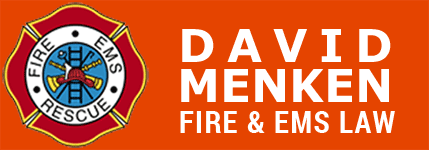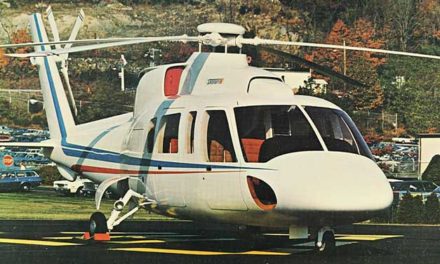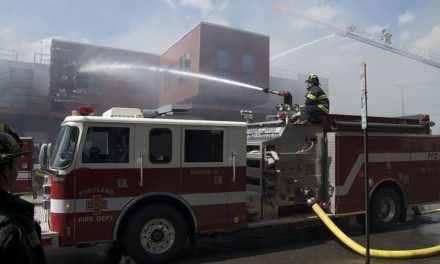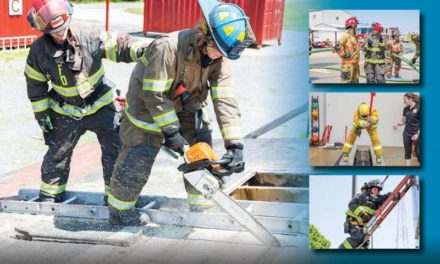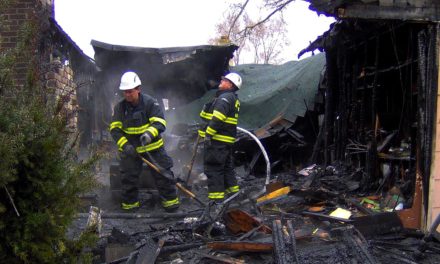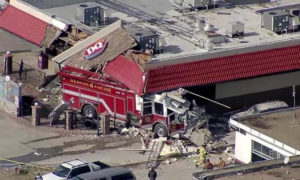 In recent news: the Wink Volunteer Fire Department “responded to a tank battery fire around 5 p.m. and the truck was traveling westbound on State Highway 302 with its lights and sirens on. A semi-water hauler passed eastbound traffic and collided head-on with the fire truck.” A firefighter on the truck was killed. The Rock Hill, New York, Fire Co. “had to deal with an emergency right at its own headquarters Tuesday after, the fire chief said, a fire company member, pulling a fire truck out to get it ready for Saturday’s parade, hit the main support beam on one of the company’s equipment bays, and the roof collapsed.”
In recent news: the Wink Volunteer Fire Department “responded to a tank battery fire around 5 p.m. and the truck was traveling westbound on State Highway 302 with its lights and sirens on. A semi-water hauler passed eastbound traffic and collided head-on with the fire truck.” A firefighter on the truck was killed. The Rock Hill, New York, Fire Co. “had to deal with an emergency right at its own headquarters Tuesday after, the fire chief said, a fire company member, pulling a fire truck out to get it ready for Saturday’s parade, hit the main support beam on one of the company’s equipment bays, and the roof collapsed.”
And in a town neighboring mine (of course, not my department!), I saw an apparatus careering down the wrong side of the street, lights blazing and horns ringing, and running through stop signs and red lights, forcing oncoming cars off the road, only to come back a few minutes later from an automatic alarm, no lights, no sirens, not speeding.
According to the NHTSA, from 2000-2009 there were over 31,000 reported accidents involving fire apparatus (and that is only the reported cases). 49 of those resulted in the death of an occupant of the apparatus, 70% occurred while the apparatus was involved in an emergency, and 66% of the fatalities involved a rollover, indicating perhaps that the driver was driving too fast. We can assume that many accidents go unreported because the damage is minimal or the issue is worked out between the parties. No matter whether the accident can be attributed to the apparatus driver, and or to the other guy, lives can be lost and property can be damaged. It never looks good for the firefighter, especially when the injured party sues and the press wants to know what happened.
Volunteer firefighters, and I am not an exception, get behind the wheel, or ride in the passenger seats, of million dollar trucks weighing up to 65,000 pounds, carrying 1,000 gallons of water, and transporting 6 or more passengers, with the training that our chiefs or maybe our commissions say we must have.
How much driver training we get is often determined by how many other responsibilities the driver trainer has at the moment – he or she may also be involved in hazmat, EMS and technical rescue training and may have only precious time to train. The training might involve a number of hours behind the wheel, knowledge of the apparatus (what is stored where, or how to pump), and a mandatory EVOC course (which mostly teaches us to slow down).
New York Vehicle and Traffic Law, Section 1104(b), permits the driver of an emergency vehicle to:
- Stop, stand or park irrespective of the provisions of the V&T law;
- Proceed past a steady red signal, a flashing red signal or a stop sign, but only after slowing down as may be necessary for safe operation;
- Exceed the maximum speed limits so long as he does not endanger life or property;
- Disregard regulations governing directions of movement or turning in specified directions.
However, Section 1004(e) makes the driver responsible for his or her negligence:
The forgoing provisions shall not relieve the driver of an authorized emergency vehicle from the duty to drive with due regard for the safety of all persons, nor shall such provisions protect the driver from the consequences of his reckless disregard for the safety of others.
NFPA 1451 contains requirements for a fire and emergency service vehicle operations training program, including safety procedures for those members who drive or occupy fire and emergency service vehicles. It’s provisions “guide the development of a written emergency vehicle operator training program…. The knowledge and skills required of safety, training, maintenance, and administrative officers responsible for developing and implementing the fire service vehicle operations training program are also outlined.”
NFPA 1002 is a standard which identifies the minimum job performance requirements for career and volunteer fire fighters who drive and operate fire apparatus.
NFPA 1451 and 1002 are guidelines only. Not following them does not mean that your department is negligent, but failing to follow them could indicate that it does not live up to established and recognizable standards.
Drivers of commercial trucks over 26,000 pounds require a commercial driver’s license no matter what state they’re from. This means that the driver of the dump truck carrying gravel requires a CDL, but the driver of the fire truck, carrying passengers, who can go through red lights and above the speed limit if he needs to, doesn’t need a CDL. Admittedly, if we required volunteer firefighters to have CDLs we would not have many drivers, but we can limit the liability of our fire district and department by requiring the same rigorous training, and retraining, required of CDL drivers, at least insofar as driver safety is concerned.
A lawsuit alleging negligence of a department or a driver is going to involve examination of the training the driver received. Even if the driver can prove that he or she took all the training required by the department or the district, and logged in all the hours which show the driver is experienced, if he or she did not have training sufficient to meet the guidelines developed in NFPA 1451 and 1002, there is a strong possibility that the plaintiff’s lawyer is going to allege that someone was negligent, either in driving or in training. Maybe grossly negligent. And that will more than likely shift the liability to the driver, who may not be covered by his or her department.
Playing better safe than sorry, a formal set of driver training protocols, following established procedures such as NFPA 1451 and 1002, will not only minimize liability but also reduce accidents.
